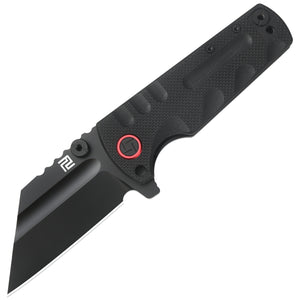Flipper knives have gained immense popularity in recent years due to their versatility and ease of use. In this article, we will delve into the anatomy and mechanics behind these fascinating tools, providing you with a comprehensive understanding of their functionality.

The Anatomy of Flipper Knives
Flipper knives consist of several key components that work together to create a seamless and efficient cutting experience. Let's take a closer look at each of these components:
Blade
The blade is the heart of any flipper knife. It is typically made of high-quality stainless steel, ensuring durability and sharpness. The blade can come in various shapes, such as drop point, tanto, or clip point, each serving different purposes. The cutting edge is honed to perfection, allowing for precise and effortless slicing.
Handle
The handle of a flipper knife is designed for comfort and grip. It is usually made of materials like G-10, carbon fiber, or titanium, providing a sturdy and lightweight construction. The handle may feature textured patterns or ergonomic contours to enhance grip and prevent slippage during use.
Flipper Mechanism
The flipper mechanism is what sets flipper knives apart from other types of folding knives. It is a small protrusion on the back of the blade that allows for easy one-handed opening. With a simple flick of the finger, the flipper deploys the blade swiftly and securely. This mechanism is loved by many for its quick accessibility and smooth action.
Locking Mechanism
To ensure safety during use, flipper knives are equipped with a locking mechanism. The most common type is the liner lock, which consists of a metal liner that locks the blade in place when opened. This prevents accidental closure and provides stability during cutting tasks. Other types of locking mechanisms include frame locks, axis locks, and lockbacks.
The Mechanics Behind Flipper Knives
Understanding the mechanics of flipper knives is crucial for maximizing their performance. Let's explore the key aspects:
Opening and Closing
As mentioned earlier, flipper knives are designed for one-handed operation. To open the knife, simply apply pressure to the flipper with your index finger, causing the blade to swing open smoothly. Closing the knife is just as easy - push the liner lock or other locking mechanism aside and fold the blade back into the handle.
Ball Bearings
Many flipper knives incorporate ball bearings in their pivot system. These tiny steel balls reduce friction and enable the blade to open and close effortlessly. The ball bearings also contribute to the smooth flipping action, ensuring a satisfying experience every time you deploy the blade.
Detent
The detent is a small mechanism that provides resistance to the blade when closed. It keeps the blade securely in place until you intentionally apply pressure to the flipper. The detent ensures that the knife remains closed when not in use, preventing accidental deployment and potential injuries.
Assisted Opening
Some flipper knives feature assisted opening mechanisms, such as springs or torsion bars. These mechanisms provide additional force to assist in blade deployment, making it even quicker and easier. Assisted opening flipper knives are particularly popular among those who require rapid access to their tools.
Now that you have a comprehensive understanding of the anatomy and mechanics behind flipper knives, you can appreciate the craftsmanship and functionality of these popular tools. Whether you're an outdoor enthusiast, a collector, or someone in need of a reliable everyday carry knife, flipper knives offer a versatile and efficient cutting solution.
Further Reading:
For more information on flipper knives and related topics, check out the following credible sources:







